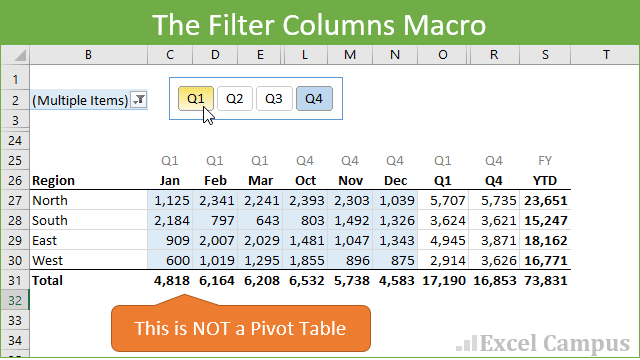
I’m using a sample sales dataset for these examples. As a simple example, if you selected the state of WA, then all the postcodes displayed in a Postcode filter would start with 6, because all the other states’ postcodes would be filtered out. The sequence in which you apply the filters will affect the other column filters. Slicers are filter controls and, as such, work in the same way as normal filters. Once created, the colours and sizing of the Slicer can be amended via the Options ribbon tab.

Just like a normal filter, you can select multiple fields (columns) to filter with a Slicer. In Excel 2010, it is in the Options ribbon tab and the Sort & Filter section. The Filter section has the Insert Slicer and Insert Timeline icons. When a PivotTable is selected, click the Analyze ribbon tab. Related: Learn how to use Excel PowerPivot A new addition in Excel 2013 is the Timeline Slicer, which handles date fields better than the standard Slicer. Slicers only work with PivotTables in Excel 2010, and the ability to use Slicers with formatted tables was added in Excel 2013.

You need Excel 2010 or a later version to use Slicers. Slicers use buttons to allow you to select your filter items, and they display all the selected filter items. This is a graphic object that floats above the Excel grid. Is there a way around this?įiltering by multiple items in a PivotTable is best done with a Slicer. When I filter by more than one item in a PivotTable, it doesn’t display what those items are.


 0 kommentar(er)
0 kommentar(er)
